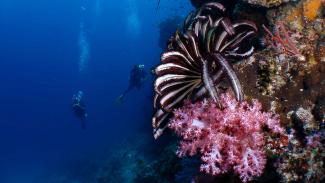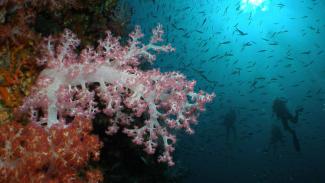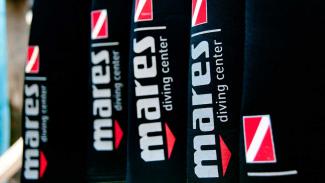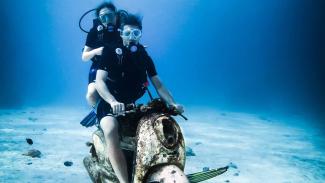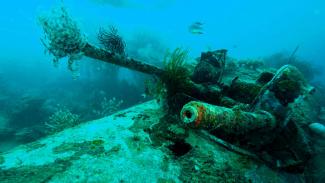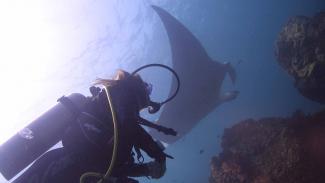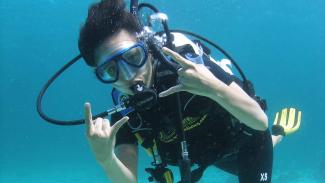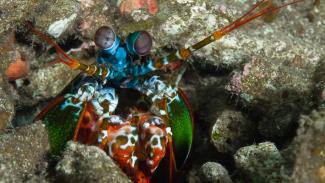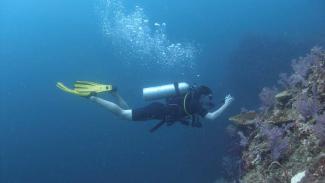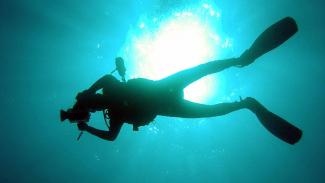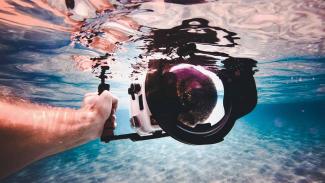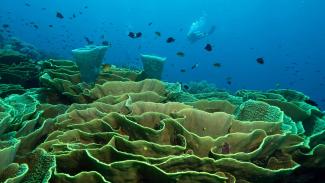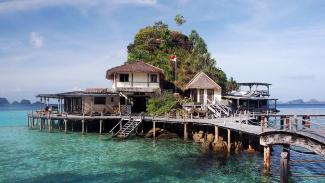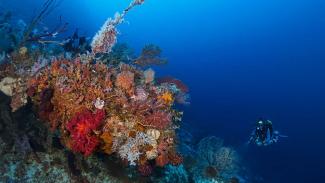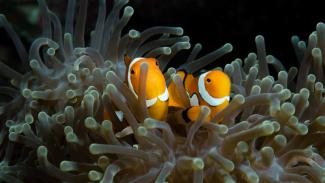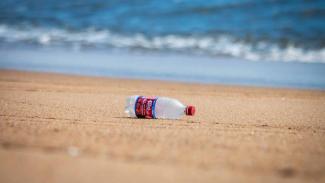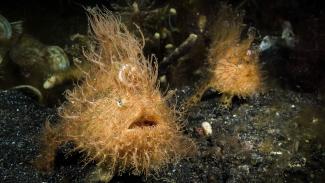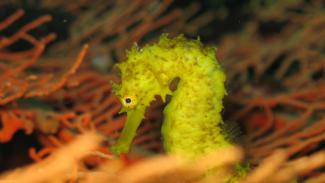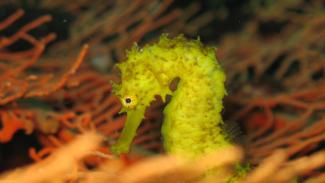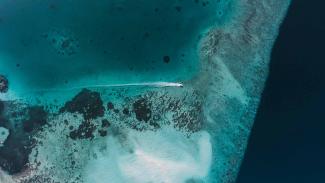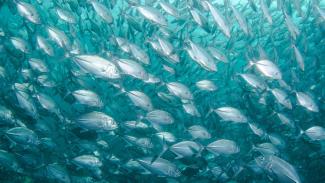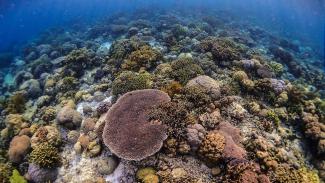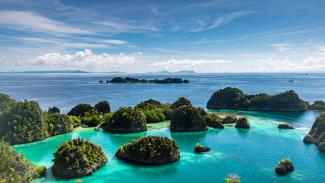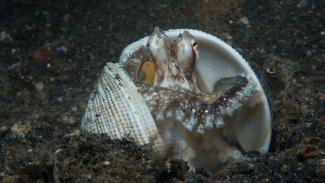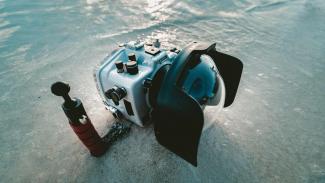Discovery
Best places for beginner divers
Asia has a huge number of dive spots that have perfect conditions for learning to dive. It has so many in fact, that you may be having a hard time choosing where you should go.
That's where our guide to the best places for beginner divers comes in. We cannot cover every tropical island or destination that is great for learning how to dive, but we can give you the lowdown on many of the best options out there for you to explore.
The seas of Asia
Asia is caught between two huge oceans, the Indian Ocean to the west and the Pacific to the east. In between is a complex geography of land & water that has given rise to some of the most fascinating & species rich seas on our planet.
Much of the geography of south-east Asia is dictated by the Pacific Ring of Fire, a geologically active zone around the edges of the Pacific, that encompasses the region and shapes the landscape producing volcanoes, mountains, island chains & trenches.
Dive equipment guide
Enshadi
All the equipment involved in diving can seem a little intimidating to a newcomer. You are likely to be wondering what on earth a Regulator is, what BCD stands for, what a split fin might be & how many millimetres your wetsuit needs to be.
There's no need to feel intimidated though. Our beginner's guide to dive equipment will take you through the basics and help you feel a little more at home with some of the terminology.
Scuba Diving Terms - A Dummies Guide
Frans Daniels
Scuba-diving, like many activities seems to have a language all of its own, with confusing concepts, technical terminology and an ocean of jargon to decipher.
To help newcomers break through this barrier we've developed a dummies guide to scuba diving, so that you can get to grips with what divers are talking about. Find out what SCUBA stands for, what PADI is, what it is to be narked, and so much more.
Wreck diving hotspots
With so much coastline and so many seas, it is no wonder that South-east Asia has some of the best wreck diving in the world.
Many of the region's wrecks are not only great for their level of preservation & fascinating history, but also for the amount of marine life that now calls them home.
So if you want to experience some world-class wreck diving, click on a hotspot below...
Underwater photography hotspots
Asia is blessed with all the ingredients any budding underwater photographer could ever wish for.
It has an enormous variety of dive sites, incredible diversity, an almost limitless choice of subjects and many highly professional dive centres to choose from.
But where are some of the very best spots for underwater photography & video? Our quick guide gives you the lowdown...
Bucket list big fish dives
There's no other thrill that quite compares to an encounter with an apex predator or gentle giant. For some, diving with Sharks is the ultimate bucket list experience. For others, it is swimming with Manta Rays.
From Myanmar in the west to PNG in the east, South-east Asia cannot fail to disappoint lovers of majestic pelagic species looking for that ultimate diving encounter.
Cheapest places to dive in Asia
Do you want to do some great diving but don't have much money to spare? Don't despair!
Asia is still one of the cheapest places in the world to dive. In the right place, just a few dollars can be your ticket to a really cheap diving trip.
To point you in the right direction, our guide will talk you through a few of the best dive destinations in Asia for those on a shoe-string budget...
Muck diving meccas
If you are an avid underwater photographer or a lover of the weird and wonderful, then the seas of Asia hold a treasure trove of delights.
Originally pioneered in Papua New Guinea, muck-diving is now all the rage, and incredibly addictive. As the epicentre of the world's marine biodiversity, there are exceptional opportunities throughout South-east Asia.
Underwater photography etiquette
Tara North
Underwater photography can be a absorbing hobby. Every avid underwater photographer has had moments so lost in his own world that they momentarily forget about everything else around them.
But we photographers have a responsibility to behave ourselves underwater and set a good example.
Find out how with our guide to photo etiquette...
Dummie's guide to camera kit
Jakob Owens
Do you struggle to know your arm from your socket, your port from your bracket, your flash from your fisheye and your light from your lens?
Well, you're not alone. Underwater photography has it's own dictionary of parts, accessories & technical terms and it's tough to sound like an expert.
So before you head out and start to talk shop, brush up on your technical knowledge with our interactive guide to underwater cameras and accessories...
Buyer's guide to underwater cameras
Tara North
If you are reading this article, then you probably have the bug. No doubt you’ve seen some incredible underwater photos in dive magazines or had a go and are eager for more.
There’s no doubt that having your own camera & housing is essential for your new hobby. There is such a wide range of options available today though, so how do you begin to choose?
Buyer's guide to underwater video
Tara North
So, you are interested in getting into underwater videography? There’s no doubting that it’s an expensive hobby, especially in terms of the equipment you need to buy.
So this means it’s really important to buy the right camera & housing set-up first time - but without experience or being able to test different models underwater, how do you choose the right system for you?
Underwater housing care
Jakob Owens
Buying all the kit to allow you to take photos underwater is not cheap, so you need to make your equipment lasts the test of time.
One of the major and most vital expenses is your underwater housing. Housings are often fragile and can require a lot of care and attention though. So what should you be doing to look after your housing and to make sure it has a happy and healthy life?
Scuba diving in Borneo - 7 key questions answered
Tara North
For most people, Borneo conjures up visions of pristine rainforests and incredible wildlife encounters. This is all true, however for scuba divers, the magic continues beneath the blue.
Scuba diving in Borneo promises world-class dive sites, vibrant reefs and incredible marine life, from the green turtles of Sipadan Island to remote and spectacular diving in Borneo Indonesia.
Choosing the right dive spot
Phil North
If you are an avid underwater photographer, choosing the right destination for your dive holiday or expedition can make a huge difference to your overall experience and enjoyment. It can also make a huge difference to the results on your camera.
The truth is that a great dive site isn't necessarily and great site for underwater photography. So what does make a destination ideal for photography and what criteria should you use to help you make a decision.
Read on to find out....
Choosing the right dive center
Behang
If you are learning to dive or taking a diving course, it is important to have the right people around you and to learn in the right environment. Likewise, if you are already a diver who is planning a diving break, you want to make sure your dives are remembered for all the right reasons.
Getting technical
Christian Gloor
Have you ever found yourself diving on a reef wall and wondering what lurks in the depths below? Or longed to spend more than a few fleeting moments exploring a mysterious & historic shipwreck?
Then maybe technical diving is the sport for you. Increasing numbers of divers, eager to explore beyond the bounds of recreational limits, are taking an interest in technical diving.
But what is technical diving, what exactly does it involve, what are the risks and how can you get involved?
How to photograph a Clownfish
Clownfish are great subjects for underwater photographers.
Not only are they colourful and full of character, but they are also one of the most iconic and well recognised fish in the sea. A good Clownfish photo nevers fails to provoke a reaction from your audience.
They are also a very tricky subject to photograph, leaving many budding photographers frustrated.
So what can you do to get a great shot?
Get Involved
Brian Yurastis
Like many people, especially those who dive & love the oceans, you are no doubt concerned by the plight of our oceans and worried what the future may hold. The marine world needs our help, but sometimes it is easy to feel like you can't make a difference.
Fish identification
Christian Gloor
For many divers the thrill of spotting and identifying a new fish is one of the reasons they love to dive.
But identifying a new fish is never that easy, especially considering the sheer abundance of different species that make their home in Asia's incredible reefs.
So we've put together some tips to help you to improve your identification skills and get more out of your diving.
Asia's endangered species
Tara North
Asia is home to some of the most diverse habitats in the world, both above and below the water, but it is estimated that more than one in three species are endangered... and the figure is rising alarmingly fast.
Underwater, a whole range of pressures are putting marine life under immense pressure. Intense population pressure is leading to over-fishing, pollution and the destruction of crucial habitats.
Southeast Asia liveaboard diving
Surita Budiman
The countless islands and complex geography of Southeast Asia have given rise to many remote regions, and some of the best liveaboard diving in the world.
All over the region, there are world-class liveaboard boats offering itineraries to some truly magical destinations.
In our Guide to Asia's top Liveaboards, we take a journey together around the very best liveaboard itineraries in Asia with detailed information, top tips and how to book your perfect liveaboard adventure...
Conservation matters
With almost 100,000 sq km of coral reefs, 51 different species of mangrove and 23 species of sea-grass, South-east Asia supports the most diverse collection of life on earth.
Unfortunately, this kaleidoscope of life may be on the brink of collapse. The consequences of human activity are putting pressure on this environment & its inhabitants every day, with south-east Asia's reef considered to be the most threatened on earth.
The rise of an atoll
Of the many intricate and incredible forms that coral reefs take, atolls are possibly the most majestic. Rising straight out of the deep ocean, these relatively tiny specs of coral attract huge amounts of marine life and make for a spectacular sight, both above and below the water.
But how did these oases in the middle of the ocean appear? What forces created them and why do they attract so much life?
Current affairs
Every diver has had experience dealing with currents - in some way they affect every single dive we make. Sometimes they are in our favour, providing a delightful drift dive.
Other times, they turn against us, making a dive difficult & strenuous. They have a big impact on marine life too, bringing nutrients that feed entire communities, from the corals themselves up to mighty Whalesharks.
But what is a current, where do they come from, where are they going and why?
The coral reef recipe
Coral Reefs are the most complex and productive of all eco-systems on earth. As divers, we often marvel at the incredibly beautiful and complicated coral reef structures we see and maybe wonder how how they came to be. They have been created over many thousands of years using a complex, unique combination of ingredients and circumstances.
Here is nature's incredible recipe...
The triangle of life
The underwater world of South-East Asia has long been famed for its wealth & diversity of marine life. But it is only relatively recently that scientists have begun to get a hold on just how diverse and special the area is.
Their research has led to the birth of the Coral Triangle - an area encompassing Indonesia, Malaysia, the Philippines, Papau New Guinea & the Solomon Islands - that has been identified as the most diverse marine ecosystem on our planet.
Survival strategies
Phil North
It's a tough world out in the seas & oceans. Predators come in all shapes and sizes and use speed, strength, deception and sometimes outright determination to catch their prey.
But its not all bad news for the smaller fish that are vulnerable to attack. They have devised a whole host of cunning strategies to avoid ending up as someone else's lunch.
Some team up with others, while some prefer to go it alone using disguise, deception or good old-fashioned deceit.
Setting up your underwater housing
Have you recently purchased an underwater housing for your camera? Maybe you feeling a little unsure how to set-up your new system correctly and are feeling in need of some tips and advice.
Don't despair. No matter what brand your housing, whether it is a simple own-brand housing or a state-of-the-art set-up, there are steps you can take every time you take your camera into the water to ensure that it is set-up correctly.
Copyright © 2023. All rights reserved
